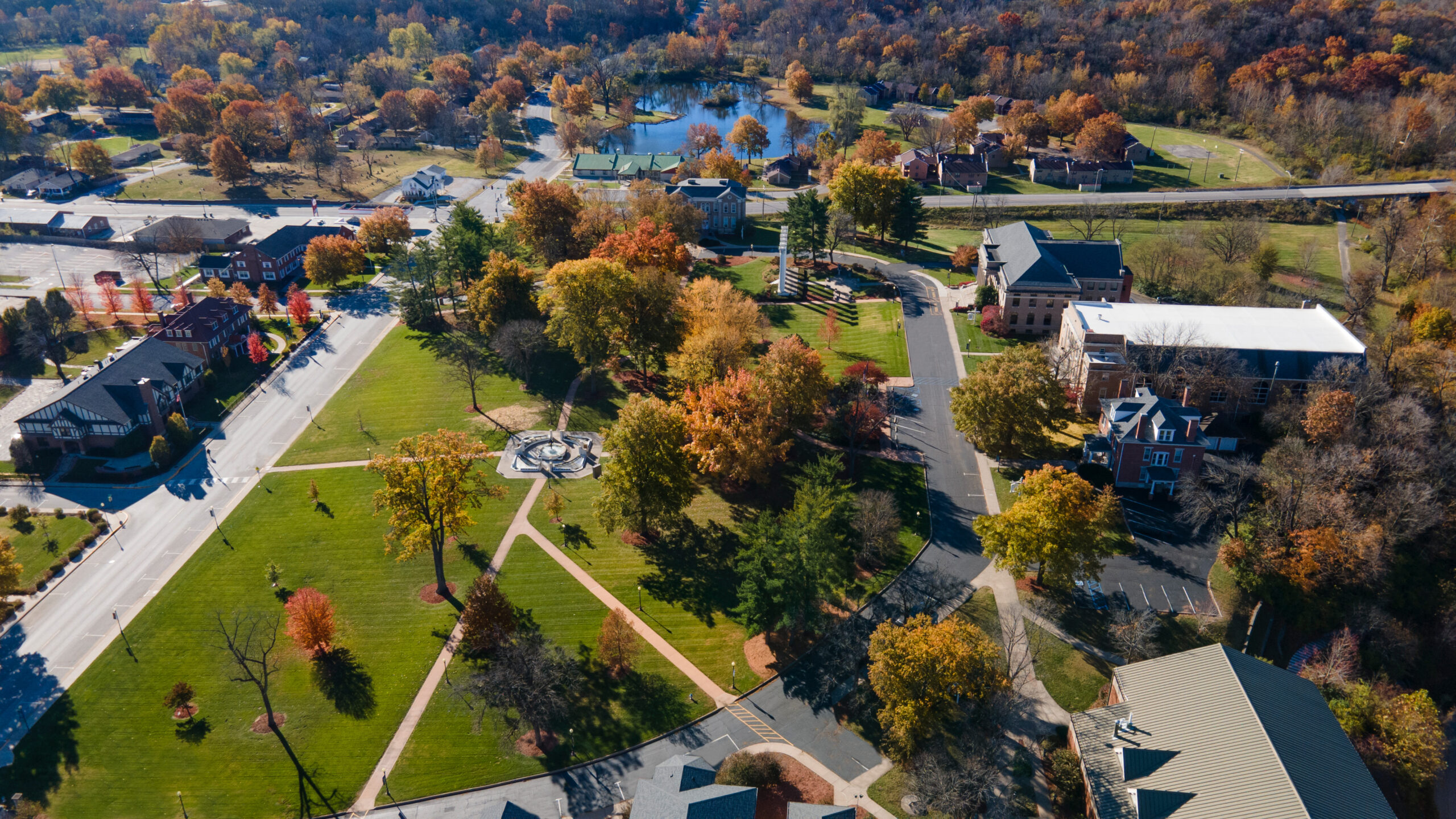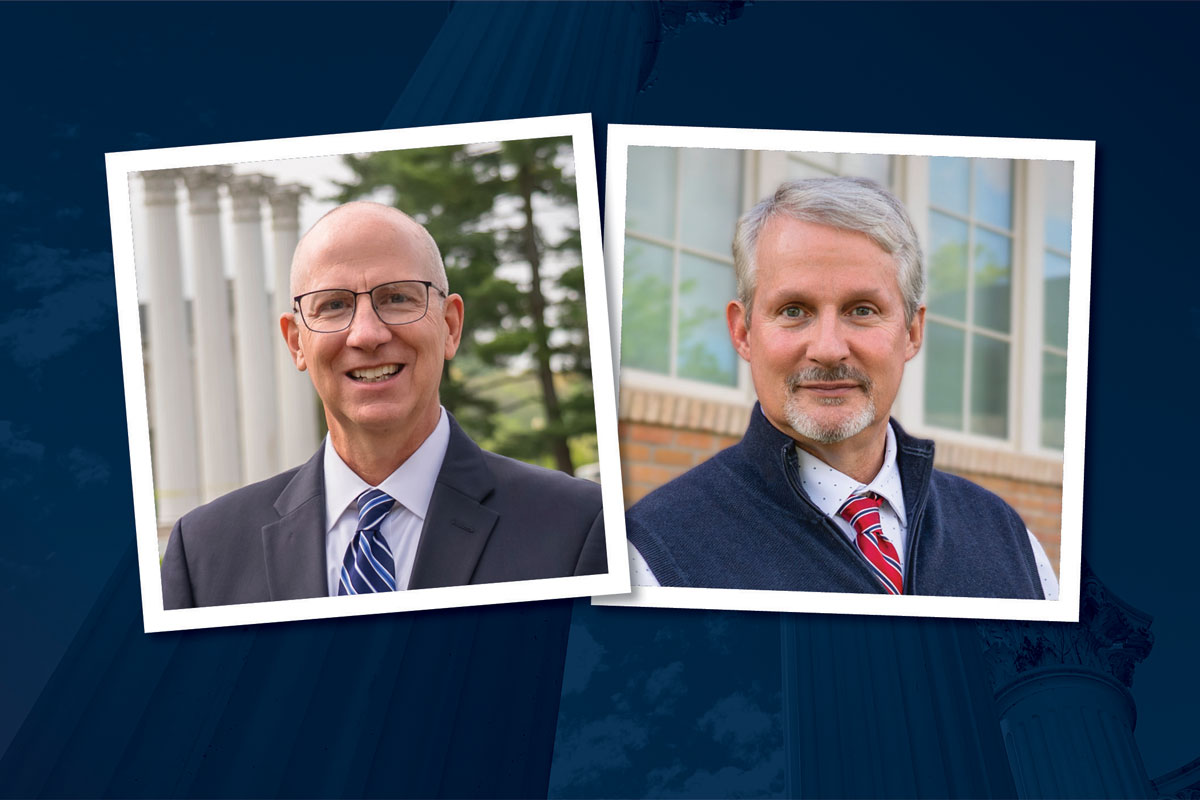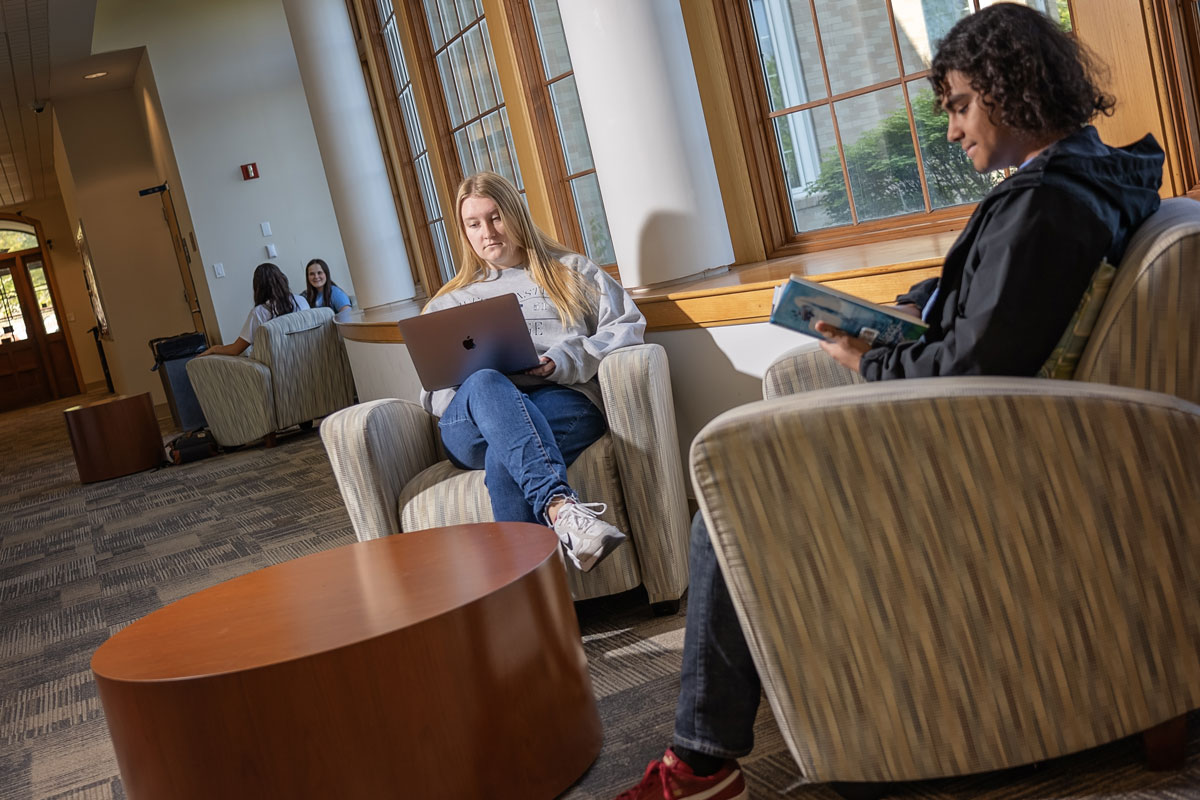Madison Ingram, ’20 ΚΑΘ, recently wrote the following essay for her job with KJFM Radio. Ingram, who interned last year for Westminster’s Department of Marketing and Strategic Communications, is pursuing a master’s degree in Strategic Communication at Maryville University in St. Louis, MO. She resides in her hometown of Bowling Green, MO. In her free time, Ingram coaches a travel fast-pitch softball team and gives pitching lessons.
A Message Heard ‘Round the World
by Madison Ingram, ’20 ΚΑΘ
Just 75 years ago, Winston Churchill and President Harry Truman brought history to a small central Missouri college gymnasium with the most famous post-World War II address: “The Sinews of Peace.” The speech, most commonly known as the “Iron Curtain” speech, was delivered on March 5, 1946, at Westminster College in Fulton, MO, in a gymnasium that still stands and is in use to this day.
Timeline
On September 3, 1939, Great Britain and France declared war on Germany after Nazi Germany refused to remove its troops from Poland. As part of the Anglo-Polish pact, a signature pact of assistance between Great Britain and Poland, both Great Britain and France declared war, deploying troops in fear of a German invasion. Germany’s invasion of Poland is now known as the event that sparked the 20th century’s second global conflict.
Eight months later, Sir Winston Churchill was named the Conservative Prime Minister of Britain. Churchill went on to serve from 1940 to 1945, leading Great Britain and the Grand Alliance to victory in World War II. World War II ended on September 2, 1945, six years and one day after Germany’s invasion of Poland. By the time the war ended, World War II had claimed the lives of an estimated 60 to 80 million people, approximately 3 percent of the world’s population. The vast majority of those who died in history’s deadliest war were civilians, including 6 million Jews killed in Nazi concentration camps during the Holocaust.
Despite being one of the most popular British prime ministers of all time, Churchill failed to be reelected in 1945. Churchill’s crushing defeat in Britain’s 1945 general election is one of the most astonishing political events in British history. Churchill had established himself as the face of British victory, and the public grew increasingly worried that Churchill might still be too focused on foreign policy in the aftermath of the conflict.
In contrast to Churchill, Clement Attlee offered peace and prosperity at home. Attlee and the Labour Party’s policies were geared towards social reform, workers’ rights, housing, low unemployment, and healthcare in the form of the NHS. The people of Great Britain were looking for a change, and although successful in completing the almost superhuman tasks assigned to him, Churchill was not the face the country was looking for in 1945.
Why Did Churchill Come to Missouri?
In 1946, Churchill was out of power, and Westminster College in Fulton, MO, was in need of a speaker for their annual John Findley Green Foundation Lecture. The road to the famous speech first started to come together the previous October, when College President Franc L. McCluer sent a letter to Churchill, asking him to come a deliver a talk on international affairs at the College. A Westminster alumnus with access to U.S. President Harry S. Truman was a key factor in helping bring Churchill to the small institution. Truman endorsed the invitation to the recently defeated British Prime Minister with the shrewdness to recognize an opportunity. In the letter, Truman wrote:
“This is a wonderful school in my home state. Hope you can do it. I’ll introduce you. Best regards, Harry Truman.”
Churchill had only met Truman once before, during the Potsdam Conference. However, he was looking to establish a relationship with Truman and speaking at the college was the perfect opportunity to start. The former British prime minister accepted the invitation and made the journey to Missouri. Truman and Churchill took a train together from Washington, DC, to Jefferson City, MO, playing poker, drinking alcohol, and smoking cigars the whole way.
When the two men arrived in Fulton, the whole town came out to wave at the motorcade. Secret Service men clung to the sides of the automobiles in their motorcade, while crowds of people dressed in their finest lined the streets to watch the promenade that ended at Westminster College. Churchill reportedly had a drink and maybe a cigar before giving his now-famous “Iron Curtain” speech, formally titled “The Sinews of Peace.”
“The Sinews of Peace”
As Churchill took the stage in the Westminster Gymnasium on an unusually warm day in March 1946, Truman joined him on the platform and listened intently to his speech. To begin his famous speech, Churchill began by praising the United States, which he declared stood “at the pinnacle of world power.” It soon became evident in the speech that he wanted to develop an even closer “special relationship” between the United States and Great Britain to organize and police the postwar world. Churchill condemned the Soviet Union’s policies in Europe, making one of his most prominent declarations,
“From Stettin in the Baltic to Trieste in the Adriatic, an iron curtain has descended across the continent.”
Churchill also noted “communist fifth columns” that were operating throughout western and southern Europe in the speech that marked the opening of the Cold War. Reactions to the speech in England and the United States were mixed. Many still viewed the USSR as a close ally, not wanting to mark dark post-war assumptions. Following the speech, Truman declined to immediately and publicly back up Churchill’s assertions. The United States later adopted a policy of containment to prevent the spread of communism.
Westminster and Churchill Today
Winston Churchill put the small town of Fulton and Westminster College on the world map in 1946, instilling traditions and values in the institution. Westminster is now home to world history and is known for a strong connection to the Churchill family. The Historic Gymnasium at Westminster is a historic landmark that is still used for college athletics. Small improvements have been made over the years to the gymnasium, but the gym looks almost the same as it did in 1946. The College is also home to one of the largest connecting pieces of the Berlin Wall in the United States.
The eight-segment connecting piece called Breakthrough is the brainchild of Edwina Sandys, Winston Churchill’s granddaughter. The Berlin Wall monument has two pieces of the segment which look like a human punched a hole through them. It is one of the most notable pieces on Westminster’s beautiful campus. The small liberal arts college houses the Church of St. Mary the Virgin, Aldermanbury, and America’s National Churchill Museum.
The Church of St. Mary the Virgin, Aldermanbury, has been an active place of worship for more than 800 years through rebellion, plague, fire, and war. The church was founded in the late 11th or early 12th century within what is now the historic city of London. In 1966, the church was brought to Fulton from London brick by brick to establish a memorial to Churchill’s famous speech. Today, America’s National Winston Churchill Museum sits in the basement of the church and is filled with paintings, writings, and history from Churchill’s lifetime.
John Findley Green Foundation Lecture
Winston Churchill’s “Sinews of Peace” address, or “Iron Curtain” speech, was the seventh John Findley Green Foundation Lecture. The John Findley Green Foundation Lecture was established in 1936 as a memorial to John Findley Green, an attorney in St. Louis who graduated from Westminster in 1884. The endowed fund makes it possible to present lectures designed to promote understanding of economic and social problems of international concern. The endowment fund is set up so “the speaker shall be a person of international reputation.”
Past speakers of the Green Lecture include former U.S. Secretary of State Dr. Madeleine Albright (2019), U.S. Senator Bernie Sanders (2017), former Prime British Prime Minister Margaret Thatcher (1996), former Soviet President Mikhail Gorbachev (1992), former U.S. President George H.W. Busch (1986), and former U.S. President Gerald R. Ford (1977).
Sarah Rummel Backer is the Director of Media Relations and Senior Writer at Westminster College in Fulton, Missouri. A proud Westminster graduate, Sarah has more than 20 years of experience in marketing and strategic communications in the areas of higher education, medicine, agriculture, and the private business sector.






